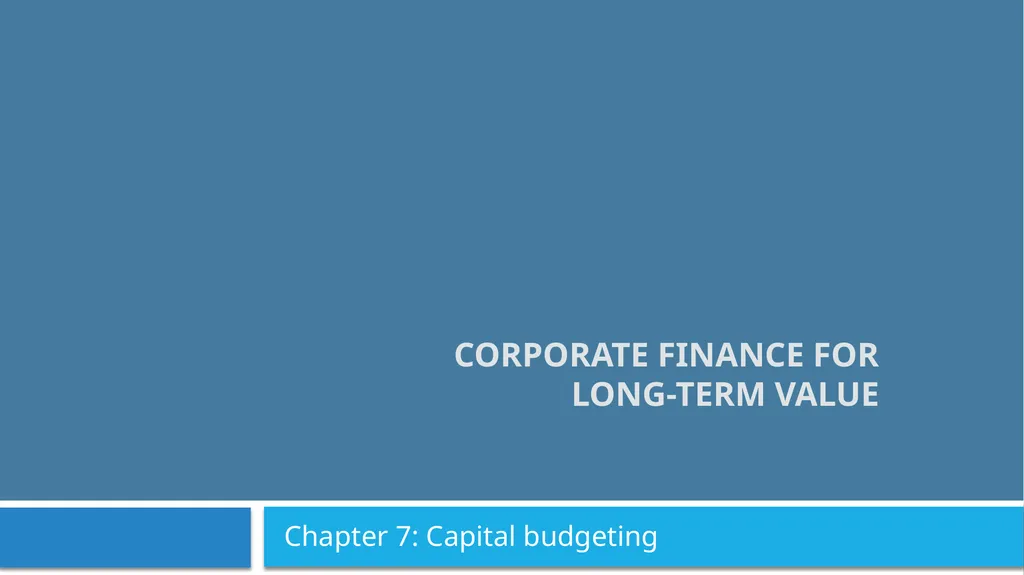Corporate Finance for Long-Term Value Chapter 7:
Author : celsa-spraggs | Published Date : 2025-06-27
Description: Corporate Finance for LongTerm Value Chapter 7 Capital budgeting Chapter 7 Capital budgeting Part 2 Discount rates and valuation methods The BIG Picture 3 How to select investment projects in practice capital budgeting Capital
Presentation Embed Code
Download Presentation
Download
Presentation The PPT/PDF document
"Corporate Finance for Long-Term Value Chapter 7:" is the property of its rightful owner.
Permission is granted to download and print the materials on this website for personal, non-commercial use only,
and to display it on your personal computer provided you do not modify the materials and that you retain all
copyright notices contained in the materials. By downloading content from our website, you accept the terms of
this agreement.
Transcript:Corporate Finance for Long-Term Value Chapter 7::
Corporate Finance for Long-Term Value Chapter 7: Capital budgeting Chapter 7: Capital budgeting Part 2: Discount rates and valuation methods The BIG Picture 3 How to select investment projects in practice -> capital budgeting Capital budgeting Calculate and compare the value of projects Integrate SV and EV into project evaluation Balance the financial, social and environmental dimensions of projects Critically evaluate projects in terms of company valuation profile The capital budgeting process 4 Focus of this chapter Calculating cash flows 5 The discounted cash flow (DCF) model calculates a project/company’s Net Present Value (NPV): Cash flows are calculated using: EBIT: earnings before interest and taxes CAPEX: capital expenditures – i.e. company investments NWC: net working capital – the difference between current assets and current liabilities Calculating cash flows 6 Note that corporate tax is first positive (tax refund) and later negative (tax paid) Estimating future cash flows 7 Determining future cash flows requires estimates on individual line-items and their underlying value drivers Terminal value 8 Forecasting assumptions 9 Calculated on given data Extrapolated assumptions Detailed High-level Incremental cash flows 10 Investment assessment is about changes to the current situation If a project creates new cash flows - but at the same time reduces the cash flows on ongoing projects - the net effect should be calculated (i.e. the incremental cash flows) Incremental cash flows reflect the difference in the company’s overall cash flows with and without the project Cannibalisation: if a new product has superior characteristics compared to the existing product, then clients will switch and buy the new product instead of the existing one Opportunity cost of the project: missed value of what could have been done instead Incremental cash flows 11 Should project B be done? Yes, incremental cash flows > 0 Including opportunity costs 12 Case: the water stress of a project is so severe that it puts drinking water quality and availability for the local population at risk Result: the company runs the risk of losing the project, and all cash flows associated with it, at the end of year 3 (with a 50% chance) NPV of 50% chance of losing the asset in year 4 Including opportunity costs 13 To address this risk and reduce the probability of losing the asset to 0%, the company could build a desalination plant, which makes seawater suitable for human consumption. Desalination plant’s marginal cash flows excluding opportunity costs














